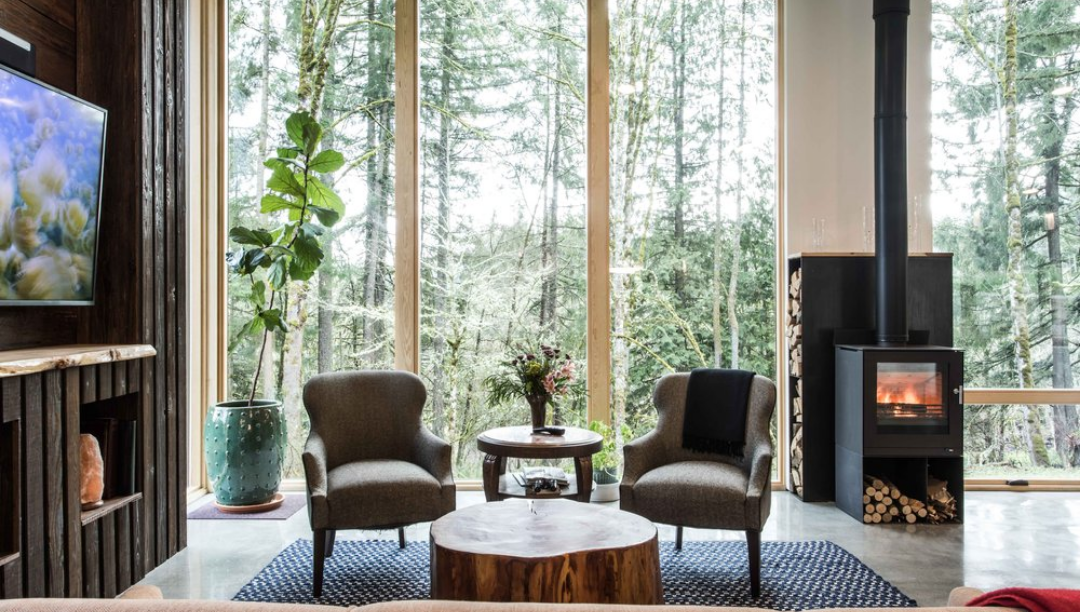In an era marked by a pressing need for sustainable living and conscientious design, the term "ADU" takes on a new dimension. Beyond being an accessory dwelling space, ADUs emerge as inherently sustainable structures that not only complement the existing home but also contribute significantly to a more eco-conscious way of living. In this exploration, we delve into the environmental advantages of ADUs, and discuss why homeowners should consider these structures not just as additions but as anchors for a sustainable future.
Defining Environmentally Friendly ADUs
At its essence, an Environmentally Friendly ADU is a blend of thoughtful design, energy efficiency, and a commitment to minimizing environmental impact. These accessory dwelling units are crafted to align with principles of sustainability, from the materials used in construction to their operational efficiency and integration with the natural environment.
1. Sustainable Materials Selection: Building the Future Responsibly
A crucial element that distinguishes Environmentally Friendly ADUs is the selection of sustainable materials. From foundation to finishings, conscientious choices in materials play a pivotal role in minimizing the environmental footprint of these structures. Reclaimed wood, recycled steel, and eco-friendly insulation materials contribute to a reduced demand for virgin resources, making each ADU a testament to responsible construction practices. We also encourage homeowners to look for locally sourced materials and products to reduce the impacts of shipping while supporting their local economy.
2. Energy Efficiency: A Pillar of Sustainable Design
Sustainable ADUs should be designed with energy efficiency at the forefront. This encompasses everything from the orientation of the structure to harness natural light and heat, to the installation of energy-efficient appliances and fixtures. Environmentally Friendly ADUs are often equipped with solar panels, rainwater harvesting systems, and energy-efficient HVAC systems, further reducing their reliance on external energy sources and minimizing their impact on the grid.
3. Smart Design for Natural Ventilation and Lighting
The design of Environmentally Friendly ADUs is a delicate dance with nature. Strategic placement of windows, skylights, and ventilation systems ensures that these structures are flooded with natural light and benefit from optimal cross-ventilation. This not only reduces the need for artificial lighting and mechanical cooling but also creates a living space that is seamlessly connected with the surrounding environment.
4. Green Roof and Sustainable Landscaping: Bringing Nature Closer
A hallmark of an Environmentally Friendly ADU is the integration of green roofs and sustainable landscaping. Green roofs not only enhance the aesthetic appeal of the structure but also contribute to improved insulation, stormwater management, and biodiversity. Coupled with native and drought-resistant landscaping, these ADUs can become not just buildings but extensions of the natural ecosystem, fostering a sense of harmony with the environment.
5. Water Efficiency: A Precious Resource Preserved
Water conservation is a non-negotiable aspect of sustainable living, and Environmentally Friendly ADUs should lead the way in water-efficient design. Low-flow fixtures, rainwater harvesting systems, and permeable surfaces for stormwater absorption collectively contribute to a significant reduction in water consumption. By incorporating these features, ADUs become models of responsible water use in residential construction.
Why Homeowners Should Embrace Environmentally Friendly ADUs
Reduced Environmental Impact: By choosing to build an Environmentally Friendly ADU, homeowners actively contribute to the reduction of their environmental footprint. The use of sustainable materials and energy-efficient systems ensures that the construction and operation of these structures are aligned with principles of ecological responsibility.
Long-Term Cost Savings: While the initial investment in Environmentally Friendly ADUs may be marginally higher, the long-term cost savings are substantial. Energy-efficient systems result in lower utility bills, and the use of durable, sustainable materials minimizes maintenance and replacement costs over time.
Increased Property Value: In a real estate market increasingly valuing sustainability, properties with Environmentally Friendly ADUs enjoy enhanced market appeal. Homebuyers recognize the long-term benefits of eco-friendly living spaces, translating into increased property value and a competitive edge in the real estate market.
Adaptability to Local Regulations: Many jurisdictions are revising building codes to encourage sustainable construction, and Environmentally Friendly ADUs align perfectly with these evolving regulations. Homeowners building ADUs find themselves in sync with the changing landscape of building requirements, positioning their properties as forward-thinking and compliant with emerging standards.
Contributing to Sustainable Communities: Building Environmentally Friendly ADUs goes beyond individual benefits; it contributes to the larger goal of creating sustainable communities. As these structures become more prevalent, they pave the way for a collective shift towards eco-conscious living, setting a standard for future residential developments.
In Conclusion: A Sustainable Tomorrow Begins at Home
In embracing the concept of Environmentally Friendly ADUs, homeowners embark on a journey toward sustainable living that transcends the boundaries of their properties. These structures become beacons of responsible design, illustrating that every decision, from material selection to energy systems, can be a conscious step toward a more sustainable future. As an ADU design expert, my invitation to homeowners is not just to consider ADUs as additional structures but as catalysts for change—change that echoes in the reduction of carbon footprints, the preservation of natural resources, and the creation of living spaces that resonate with the principles of environmental stewardship. Building an Environmentally Friendly ADU is not merely an investment in property; it's an investment in a future where homes and the environment coexist in perfect harmony.


